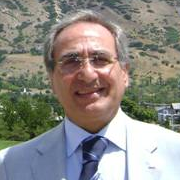Innovative University of Chemistry and Technology: A Modern Scientific Image-Celebrating the 90th Anniversary of the Ivanovo State University of Chemistry and Technology
A special issue of Molecules (ISSN 1420-3049).
Deadline for manuscript submissions: closed (15 June 2021) | Viewed by 29012
Special Issue Editors
Interests: nanocomposites; functional clays; micro- and mesoporous materials; photocatalysts; thermodynamic properties of lanthanide compounds; coordination chemistry and metal hydroxocomplexes; ceramics technology
Interests: macroheterocyclic compounds; macromolecules; coordination compounds; organic functional materials; supramolecular chemistry; natural and physiologically active substances; synthesis of organic compounds
Interests: thermodynamics of bio-functional ligand metal complexes and speciation in aqueous solution; Supramolecular chemistry; optimization of data extraction from calorimetric experiments; use of new carriers for the removal/detection of undesired species
Special Issue Information
Dear Colleagues,
during the 90 years of its history, Ivanovo State University of Chemistry and Technology (ISUCT) has combined the best traditions of Russian higher education with new approaches to education activities. Research activity has been, and remains today, an important component of the professional formation of ISUCT students. ISUCT is a multidisciplinary research and educational center covering fields such as chemistry, chemical technology, and related disciplines.
Ivanovo State University of Chemistry and Technology is highly motivated to collaborate with the partners from educational and scientific institutions, as well as with companies from related sectors of the economy. ISUCT maintains long-term scientific contacts with research centers and leading universities/institutions in Europe, Asia, and America within the framework of intergovernmental and cooperation agreements, as well as contracts. Joint research is carried out in several areas, including the structure and energy of molecules, plasma properties, the complexation of biologically active substances in solutions, the synthesis and properties of macroheterocyclic compounds, textile chemistry, the design and synthesis of functional materials, including catalysis and adsorption materials, the development of the theory and design of energy and resource-saving processes in dispersed environments, environmental protection, etc.
The of ISUCT is to provide BSC, Master, and Ph.D. students with modern high-quality education, while ensuring the appropriate flexibility that fits the chosen academic curriculum. ISUCT is committed to providing students with up-to-date knowledge in the field of basic science, with the goal of generating innovative and competitive products suitable for industrial applications.
This Special Issue is celebrating the 90th Anniversary of the Ivanovo State University of Chemistry and
Technology, and will collect papers on chemistry, chemical technology, and related disciplines.
Prof. Dr. Mikhail F. Butman
Prof. Dr. Oscar I. Koifman
Prof. Dr. Giuseppe Arena
Guest Editors
Manuscript Submission Information
Manuscripts should be submitted online at www.mdpi.com by registering and logging in to this website. Once you are registered, click here to go to the submission form. Manuscripts can be submitted until the deadline. All submissions that pass pre-check are peer-reviewed. Accepted papers will be published continuously in the journal (as soon as accepted) and will be listed together on the special issue website. Research articles, review articles as well as short communications are invited. For planned papers, a title and short abstract (about 100 words) can be sent to the Editorial Office for announcement on this website.
Submitted manuscripts should not have been published previously, nor be under consideration for publication elsewhere (except conference proceedings papers). All manuscripts are thoroughly refereed through a single-blind peer-review process. A guide for authors and other relevant information for submission of manuscripts is available on the Instructions for Authors page. Molecules is an international peer-reviewed open access semimonthly journal published by MDPI.
Please visit the Instructions for Authors page before submitting a manuscript. The Article Processing Charge (APC) for publication in this open access journal is 2700 CHF (Swiss Francs). Submitted papers should be well formatted and use good English. Authors may use MDPI's English editing service prior to publication or during author revisions.
Keywords
- Atomic molecular systems and materials design, modeling, structure, and properties
- Hybrid composites and structures
- Smart textiles
- Plasmochemical technologies
- Catalytic and membrane technologies
- Electrochemical technologies
- Nanostructuring effects and "molecular machines"
- Energy and resource-saving technologies
- High-efficiency antibacterial systems
- Targeted drugs, biomolecules, and biomarkers delivery systems
Benefits of Publishing in a Special Issue
- Ease of navigation: Grouping papers by topic helps scholars navigate broad scope journals more efficiently.
- Greater discoverability: Special Issues support the reach and impact of scientific research. Articles in Special Issues are more discoverable and cited more frequently.
- Expansion of research network: Special Issues facilitate connections among authors, fostering scientific collaborations.
- External promotion: Articles in Special Issues are often promoted through the journal's social media, increasing their visibility.
- e-Book format: Special Issues with more than 10 articles can be published as dedicated e-books, ensuring wide and rapid dissemination.
Further information on MDPI's Special Issue policies can be found here.








